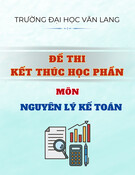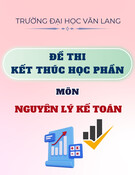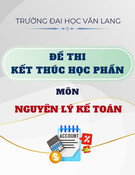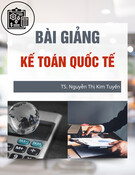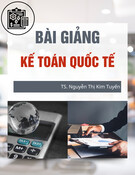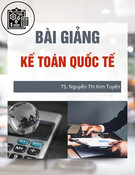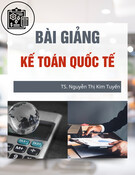
TNU Journal of Science and Technology
229(03): 59 - 65
http://jst.tnu.edu.vn 59 Email: jst@tnu.edu.vn
STRATEGIC MANAGEMENT ACCOUNTING BY PUBLIC UNIVERSITIES
IN VIETNAM: COMPARISON BY ORGANIZATION STRUCTURE
Le Thi Tu Oanh1, Nguyen Thi Lan Anh2, Ta Thi Thuy Hang1*, Nguyen Thi Hoa3
1University of Labor and Social Affairs, 2Hanoi University of Industry,
3Nghe An University of Economics
ARTICLE INFO
ABSTRACT
Received:
15/8/2023
The study aims to compare the use of strategic management accounting (SMA)
by organizational structure (level of autonomy, year of establishment, and
student size) of Vietnamese public universities. Survey data was collected from
142 accountants of Vietnamese public higher education institutions through
questionnaires and regression analysis using SPSS 22 software. The results
show that in terms of autonomy, the fully autonomous universities have the
most impact on the use of strategic management accounting, followed by non-
autonomous universities, and semi-autonomous universities only have an
impact on the use of financial metrics. In terms of year of establishment, only
universities established less than 20 years old have an impact on the adoption of
strategy and use of financial metrics. In terms of student size, the university that
enrolls over 5000 students/year has an impact on the use of strategic
management accounting in 04 contents, and the one with an enrollment size of
fewer than 2000 students/year has an impact on 02 contents of strategic
management accounting. The research results help universities to put more
emphasis on strategic management accounting information in decision making
taking into consideration the organizational structure. This study complements
the existing literature review regarding strategic management accounting
content and the impact of organizational structure (ownership, age, size) on the
use of strategic management accounting by public universities in Vietnam.
Revised:
26/9/2023
Published:
26/9/2023
KEYWORDS
Strategic management accounting
Public universities
Degree of autonomy
Number of students
Number of years of establishment
KẾ TOÁN QUẢN TRỊ CHIẾN LƯỢC TRONG CÁC TRƯỜNG ĐẠI HỌC
CÔNG LẬP VIỆT NAM: SO SÁNH THEO CẤU TRÚC TỔ CHỨC
Lê Thị Tú Oanh1, Nguyễn Thị Lan Anh2, Tạ Thị Thúy Hằng1*, Nguyễn Thị Hoa3
1Trường Đại học Lao động – Xã hội, 2Trường Đại học Công nghiệp Hà Nội,
3Trường Đại học Kinh tế Nghệ An
THÔNG TIN BÀI BÁO
TÓM TẮT
Ngày nhận bài:
15/8/2023
Nghiên cứu nhằm so sánh việc sử dụng kế toán quản trị chiến lược (SMA)
theo cấu trúc tổ chức (mức độ tự chủ, năm thành lập và quy mô sinh viên) của
các trường đại học công lập Việt Nam. Dữ liệu khảo sát được thu thập từ 142
kế toán của các cơ sở giáo dục đại học công lập Việt Nam thông qua bảng hỏi,
phân tích hồi quy bằng phần mềm SPSS 22. Kết quả cho thấy xét theo mức độ
tự chủ, các trường tự chủ toàn bộ có tác động nhiều nhất đến sử dụng kế toán
quản trị chiến lược, tiếp đến là trường chưa tự chủ, còn các trường tự chủ một
phần chỉ có tác động về sử dụng thước đo tài chính. Xét theo năm thành lập,
chỉ có các trường thành lập dưới 20 năm mới có tác động đến áp dụng chiến
lược và sử dụng thước đo tài chính của kế toán quản trị chiến lược. Xét theo
quy mô sinh viên, trường tuyển sinh trên 5000 sinh viên/năm có tác động đến
việc sử dụng kế toán quản trị chiến lược theo 04 nội dung, trường có quy mô
tuyển sinh dưới 2000 sinh viên/năm có tác động đến 02 nội dung của kế toán
quản trị chiến lược. Kết quả nghiên cứu giúp các trường chú trọng hơn thông
tin của kế toán quản trị chiến lược trong việc ra quyết định có xem xét đến cấu
trúc tổ chức. Nghiên cứu này bổ sung cho các tài liệu tổng quan hiện có liên
quan đến nội dung kế toán quản trị chiến lược và tác động của cấu trúc tổ chức
(sở hữu, tuổi, quy mô) đến việc sử dụng kế toán quản trị chiến lược của các
trường đại học công lập Việt Nam.
Ngày hoàn thiện:
26/9/2023
Ngày đăng:
26/9/2023
TỪ KHÓA
Kế toán quản trị chiến lược
Trường đại học công lập
Mức độ tự chủ
Quy mô sinh viên
Số năm thành lập
DOI: https://doi.org/10.34238/tnu-jst.8529
* Corresponding author. Email: hangulsa@gmail.com

TNU Journal of Science and Technology
229(03): 59 - 65
http://jst.tnu.edu.vn 60 Email: jst@tnu.edu.vn
1. Introduction
Facing the increasingly fierce competition of international integration, Vietnamese public
universities have been assigned autonomy in operation by the State. The assignment of university
autonomy is stipulated in the Law on Education but started to be put into practice under Resolution
77/NQ-CP dated October 24, 2014 [1]. Autonomy allows university students to learn to decide on
their issues in terms of task performance, autonomy in organizational structure, personnel, financial
autonomy, and enrollment. According to the Ministry of Education and Training, up to now, Vietnam
has 141 out of 232 universities (61%) eligible for autonomy [2]. When switching to an autonomous
mechanism, the need to use the information for decision-making for administrators of public
universities becomes even more urgent to enhance operational efficiency. In this context, universities
cannot lack the important management tools that are strategic management accounting (SMA).
The term SMA was first introduced by Lord [3], but later, SMA became better known from
the work of Bromwich [4], Roslender and Hartb [5]. SMA is usually defined as a group of
techniques for providing and analyzing financial information about the production costs of
enterprises and competitors and always closely follows the enterprise's strategy [6], [7].
According to Simmonds [8], SMA helps managers determine the strategy and strategic position
of the organization because the related techniques take into account external factors such as the
competitive environment. SMA information helps managers plan, forecast key issues, and limit
possible risks, from which to compare and evaluate for control and review effectiveness.
SMA at organizations in general and universities, in particular, is of interest to many scholars.
According to Evi Marlina [9], the research on SMA in universities has been concentrated for
more than 10 years. Studies on SMA before 2013 focused on the concordance between the
university's strategic and operational management accounting design, including the relevance and
effectiveness of operations. The studies after 2013 focused on the role of SMA in improving the
performance of universities, using more complex tools such as quality management systems and
balanced scorecards to achieve university performance.
Cropper and Cook [10] point out that many universities are not satisfied with their cost
accounting systems and are looking for ways to change them. With the financial resources for
universities increasingly limited, it is necessary to offset the costs from the revenue of the courses
to better manage the resources.
Parker [11] mentions the changes by which higher education is affected, thereby affecting the
strategy and use of accounting information. Factors including the context of globalization,
financial pressures, funding sources, and all of these pressures have permanently changed the
higher education system in terms of information acquisition and decision-making, especially the
domination of intellectual culture by commercial values.
Tommaso Agasisti et al. [12] researched evaluation information on the effectiveness of SMA
at four major Italian universities stemming from the rapidly changing environment for
universities in Europe since the mid-1980s when the government granted financial autonomy to
universities. This change has posed challenges for administrators and management accounting
systems of universities. The study analyzed and recommended the SMA of these universities with
two aspects: resource allocation and new training programs.
Jocelyn Horne and Baiding Hu [13] evaluated the performance of Australian universities by
estimating the cost-effectiveness of 36 universities in the period 1995 – 2002. From random
variable analysis, the results found that universities were not operating effectively according to
the current use of costs and suggested the application of personal management responsibility for
better cost control.
Agassiti and Johnes's research on performance evaluation in Italian universities in the face of
the rapid change in the higher education environment in Europe when the Government grants
financial autonomy to universities [14]. Research results show that the change in cost structure
and efficiency of management accounting techniques will reduce profits in universities.

TNU Journal of Science and Technology
229(03): 59 - 65
http://jst.tnu.edu.vn 61 Email: jst@tnu.edu.vn
Owino, Munene, and Ntayi [15] studied responsibility accounting, a tool of SMA in Ugandan
public universities. The study found that there is a system of responsibility accounting in public
universities; where costs and revenues are accrued and reported from the faculties and from the
faculty to university management, the department head has the authority to administer their budget
allocation estimates. However, responsibility accounting that follows the hierarchical model in
public universities is still fuzzy. The characteristics of public universities are administrative
reporting, affecting the use of information for decision-making by the Board of Directors.
Yasmiza et al. [16] analyzed the role of management accounting information in decision-
making in Malaysian public universities. The research has shown that the leadership of
Malaysian public universities is interested in the most important types of accounting information,
which are reports, estimates, and SMA. It also shows that teamwork and taking responsibility are
the most in-demand skills for accountants in Malaysian public universities.
Most quantitative research on SMA in universities has focused on higher education strategies,
competitiveness, or how higher education strategies can be used to gain competitive advantage [9].
Among the studies on SMA, the studies that are cited, mentioned, and used a lot for reference are
[17], [18]. Cadez and Guilding [17] identified 16 individual SMA tools grouped into five categories,
namely performance planning, control and measurement, strategic costing, competitor accounting,
and accounting client. The results of this study also assess that the use of SMA is positively related
to the adoption of strategy and organization size. Lachmann et al. [18] pointed out that the content of
SMA includes strategy application, strategic planning, use of SMA techniques, strategic reporting,
financial and non-financial information, and decision-making strategy. According to this study,
SMA also applies very diversely, depending on the organizational structure characteristics
(ownership, size, age) of the unit. According to Phi Anh [19], SMA information is affected by the
size of the organization, the business environment factors, and the characteristics of the business
industry of the organization.
There are not many studies on SMA in Vietnam and these researches focus on applying in
enterprises, such as [19], [20]. These studies have assessed the level of application of SMA in
Vietnamese enterprises, from the perspective of management accounting techniques and other
factors as size and age of enterprises. Thus, there has been no research on applying SMA in
universities in general and public universities in particular in Vietnam. So, the objective of this
study is to compare the use of SMA information considering the influence of the degree of
autonomy, the number of years of establishment, and the number of annual enrollments of public
universities in Vietnam.
2. Research methods
From the theoretical overview study, the authors built a questionnaire to evaluate the use of
SMA in Vietnam's universities considering the degree of autonomy, the number of years of
establishment, and the size of students. The scale was inherited according to Cadez and Guilding
[17] and Lachmann et al.[18], in which SMA includes Apply (AD), Planning (LKH), Techniques
(KT), Financial Information (TC), Non-Financial Information (PTC), Report (BC) and Making
Decision (RQD) (Table 1).
Table 1. Scale description table
No.
The scale
Encryption
No. of Items
1
Apply
AD
03
2
Planning
LKH
03
3
Techniques
KT
06
4
Financial Information
TC
05
5
Non- Financial Information
PTC
03
6
Report
BC
04
7
Making Decision
RQD
03
(Source: Prepared by the authors, 2023)

TNU Journal of Science and Technology
229(03): 59 - 65
http://jst.tnu.edu.vn 62 Email: jst@tnu.edu.vn
After determining the scale according to the theoretical synthesis, the research steps are as follows:
A questionnaire was built on Google form, divided into 3 main parts: (i) Quality management
accounting; (ii) Public universities information; (iii) Personal information of survey respondents.
The sections on quality management accounting used a 5-point Likert scale, from "1-Strongly
disagree" to "5-Strongly agree". The number of students and the number of years of the
establishment were used Logarithmic function.
The official questionnaire was built on Google form and sent to 172 universities via email and
Zalo social network. The results received 142 votes, representing the chief accountants and
accountants of 102 public universities. Each unit (headquarters, branch, dependent establishment)
corresponds to 01 votes. After data encryption and cleaning, 142 votes were all valid for analysis.
Data were analyzed on SPSS 22 software using the following tools: (1) Descriptive statistical
analysis; (2) Reliability test and exploratory factor analysis; (3) Regression Linear analysis to
explain the relationship between the application of SMA (01 dependent variable) according to 06
independent variables. The independent variables were averaged to serve as a basis for analysis
and comparison by degree of autonomy, number of years of establishment, and student size.
Regarding the sample size, the total number of responses was 142 votes. According to the
degree of autonomy, fully autonomous public universities account for the highest proportion
(47.2%), followed by universities with partial autonomy (43.7%), and the rest are non-autonomous
universities (9.2%). In terms of years of establishment, universities established from 20 to less
than 40 years old account for the highest percentage (33.1%), followed by 40-60 years (24.6%),
two groups of universities with 60 years or more and under 20 years accounted for quite similar
proportions. In terms of student size, most universities have many students from 2,000 to 5,000
(75%), followed by universities with less than 2,000 students (33.1%), universities with more than
5,000 students accounting for the lowest percentage.
3. Research results and discussion
The results of the analysis to evaluate the use of SMA in public universities in Vietnam are
affected by the degree of autonomy, the number of years of establishment, and the number of
students in the universities. The analysis of reliability and exploratory factors of groups including
AD, BC, LKH, TC, PTC, KT, and RQD all met the requirements for regression analysis.
Table 2. Comparison of SMA usage by the degree of autonomy
Degree of autonomy
AD
BC
PTC
TC
KT
RQD
LKH
Adjusted R
Square
F-value
Nonautonomy
1.190**
.450
-.266
-1.136**
.713
.436
.270
.695
4.906**
Semi autonomy
.106
-.231
.024
.671**
-.266
.234
.031
.212
3.341***
Full autonomy
.284**
-.133
.166
.409***
-.205
-.051
.313**
.258
4.281***
(* p<0.1; ** p<0.05; *** p<0.01)
(Source: Prepared by the authors, 2023)
When comparing the application of SMA according to the degree of autonomy, Table 2 shows
that the Adjusted R Square value reflects the level of interpretation of the degree of autonomy
affecting the use of SMA information, for the non-autonomous field. The highest level of
explanation is followed by total autonomy, and finally semi-autonomy. The Sig value < 0.05
shows that the model and data are suitable. Looking at the details of the contents of the SMA
according to the degree of autonomy, we see that there is a different impact between the
university on the application of financial measures (TC), according to which, the semi-
autonomous university applies financial measures that have the strongest and positive impact on
SMA information use, followed by fully autonomous fields, while non-autonomous fields have
the opposite effect. Regarding strategic application (AD), non-autonomous universities have the
strongest impact, followed by fully autonomous universities, while semi-autonomous universities
have no impact. Strategic planning (LKH) is only statistically significant in the field of total

TNU Journal of Science and Technology
229(03): 59 - 65
http://jst.tnu.edu.vn 63 Email: jst@tnu.edu.vn
autonomy. The remaining contents of SMA such as strategic reporting (BC), non-financial
measures (PTC), SMA techniques (KT), and decision-making (RQD) do not have enough basis
to conclude on the impact of the autonomy level to the application of SMA. In general, fully
autonomous universities have the most impact on SMA use (AD, TC, LKH), followed by non-
autonomous universities (AD, TC), while partially autonomous universities only have an impact
on the use of financial measures (TC).
Table 3. Comparison of SMA usage by year of establishment
Founded year
AD
BC
PTC
TC
KT
RQD
LKH
Adjusted R Square
F-value
< 20 years
.296**
-.039
.064
.272**
-.089
-.078
.121
.160
4.048***
> 60 years
.363
-.500
.214
.410
-.129
.394
.225
.228
2.181*
(* p<0.1; ** p<0.05; *** p<0.01)
(Source: Prepared by the authors, 2023)
Comparing the application of SMA by year of establishment (Table 3), only universities with
less than 20 years of establishment and more than 60 years of establishment are statistically
significant. The Adjusted R Square value shows that the explanation for the number of years of
establishment affects the use of SMA of universities over 60 years higher than that under 20
years. The Sig value < 0.1 shows that the model and data are suitable. However, when
considering in detail, only universities with less than 20 years of age have an impact when
applying strategy (AD) and using financial measures (TC), while over 60 years old ones do not
have enough grounds to conclude in this study.
Table 4. Comparing SMA usage by the number of students
Number of
students
AD
BC
PTC
TC
KT
RQD
LKH
Adjusted R
Square
F-value
< 2000
.253**
-.040
.102
.189
-.112
-.109
.206*
.093
2.377**
> 5000
.318*
-.486*
.098
.658**
-.198
.360*
-.006
.336
4.330***
(* p<0.1; ** p<0.05; *** p<0.01)
(Source: Prepared by the authors, 2023)
The application of SMA according to student size (Table 4), only universities with enrollment
size of fewer than 2000 students/year and over 5000 students/year are statistically significant.
The Adjusted R Square value shows that the explanation for the impact of student size on SMA
application is higher for universities with more than 5000 students compared to universities with
less than 2000 students. Sig value < 0.5 shows that there is a good fit of the model and data.
When looked at in detail, the school's enrollment of over 5000 students/year has an impact on
strategic use (AD), strategic reporting (BC), use of financial metrics (TC), and decision-making
(RQD). Universities with an enrollment size of fewer than 2000 students/year only have an
impact on the application of Strategy (AD) and Planning (LKH). In terms of strategic application
(AD), universities that enroll more than 5000 students per year have a stronger impact than
universities with fewer than 2,000 students per year.
Thus, when considering the application of SMA according to the degree of autonomy of
Vietnamese public universities, the results show that fully autonomous universities have the most
impact on the use of SMA (AD, TC, LKH), followed by non-autonomous universities (AD, TC),
and semi-autonomous universities only have an impact on the use of financial measures (TC).
This shows that autonomous public universities have paid more attention to SMA information.
This result has been consistent with the characteristics of Vietnam's public universities as these
universities are gradually transforming from the state protection mechanism, funded and
coordinated by the state to operate autonomous operations. Universities need to change to adapt
and improve the effectiveness of their operations. When switching to an autonomous mechanism,
universities must operate like businesses, and self-balancing, and management accounting will be
clearer. Therefore, public universities that are fully autonomous have focused on applying


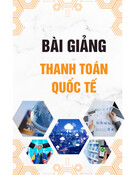

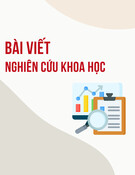
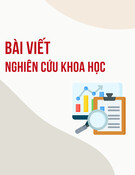
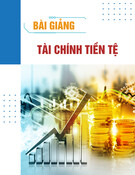

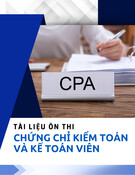

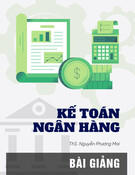
![Đề thi Nguyên lý kế toán học kì 2 năm 2024-2025 có đáp án (Lần 2) - [Kèm đề thi kết thúc học phần]](https://cdn.tailieu.vn/images/document/thumbnail/2025/20250911/kimphuong1001/135x160/98991757577228.jpg)
